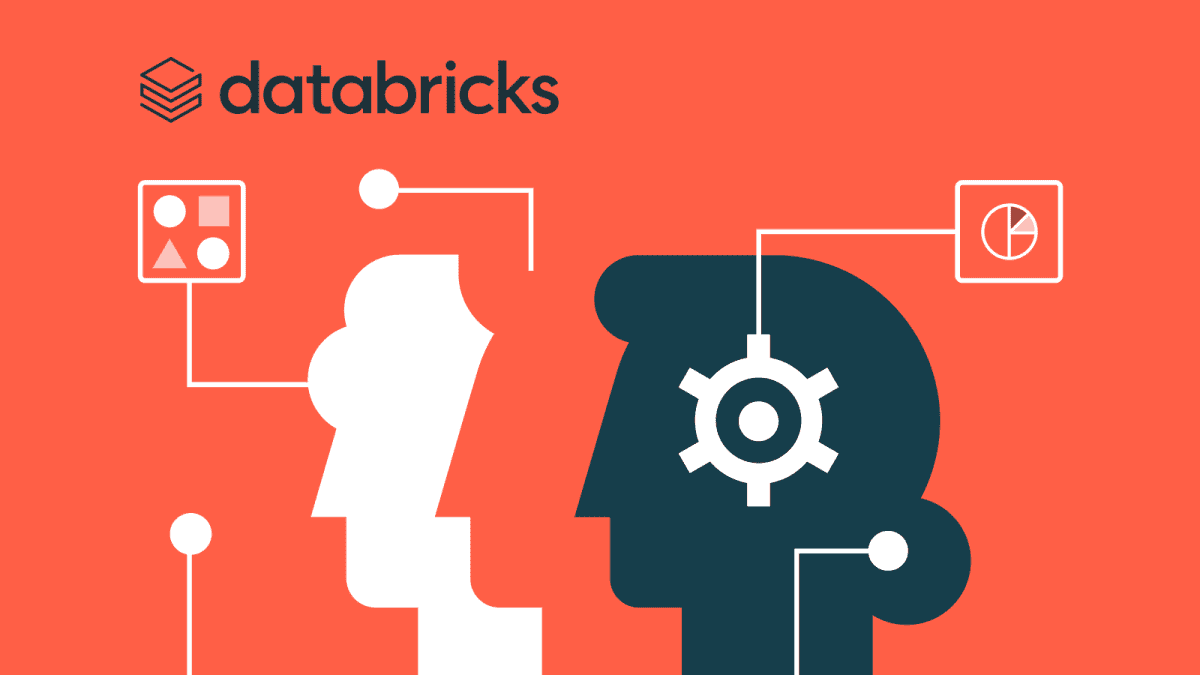Databricks Projects $3.7 Billion in Annualized Revenue, Expands into Database Market
2 Sources
2 Sources
[1]
Databricks says annualized revenue will reach $3.7 billion by next month
Ali Ghodsi, co-founder and CEO of Databricks, speaks at the company's Data and AI Summit in San Francisco on June 11, 2025. Databricks, a data analytics software vendor, said on Wednesday that it expects to generate $3.7 billion in annualized revenue by July, with year-over-year growth of 50%. CFO Dave Conte delivered the numbers at a briefing for investors and analysts tied to the company's Data and AI Summit in San Francisco on Wednesday. Growth in the October quarter was 60%, Databricks said in late 2024. Databricks is one of the most highly valued tech startups, announcing in December that it raised $10 billion at a $62 billion valuation. Snowflake, its closest public market competitor, has a market cap of about $70 billion on annualized revenue of just over $4 billion, based on its latest quarter. Conte didn't give any indication of when Databricks might file for an IPO. On Wednesday, fintech company Chime priced its IPO, and stablecoin issuer Circle started trading on the New York Stock Exchange last week. Databricks had $2.6 billion in revenue in its fiscal year that ended in January, with a net retention rate exceeding 140%, unchanged from last year. In the first quarter of the new fiscal year, nearly 50 of Databricks' 15,000-plus customers were spending over $10 million annually, Conte said. "We want to combine good revenue growth and good product velocity with profitability," Conte said. The company has roughly 8,000 employees. Earlier on Wednesday, Databricks CEO Ali Ghodsi said the company is hiring 3,000 people in 2025. Databricks was close to being free cash flow positive for the first time in the most recent fiscal year, Conte said. In addition to Snowflake, competition also comes from cloud providers that sell their own data warehousing software. Also on Wednesday, Databricks announced a preview of Lakebase database software drawing on technology from its recent $1 billion acquisition of startup Neon. Lakebase stands to expand the size of Databricks' market opporunity, Conte said.
[2]
Databricks Projects $1 Billion in Revenue From Data Warehouse Business | PYMNTS.com
By completing this form, you agree to receive marketing communications from PYMNTS and to the sharing of your information with our sponsor, if applicable, in accordance with our Privacy Policy and Terms and Conditions. The company is also introducing a new database product that it hopes will enjoy a similar growth trajectory, Bloomberg News reported Wednesday (June 11). A company spokesperson told the news outlet that Databricks expects $1 billion in revenue run rate for Databricks SQL by the close of its fiscal year in January 2026, up from a $600 million run rate in December 2024. Growth in Databricks' data warehousing business has been driven by customers recognizing that Databricks' offering costs less than other options, CEO Ali Ghodsi told Bloomberg. The report noted that Databricks SQL, used to store and analyze data, is the company's product that competes most directly with Snowflake. Snowflake, the report added, focuses on cloud data warehousing, and is projected to record $4.3 billion in product revenue in the fiscal year ending in January 2026. Databricks was valued at $62 billion earlier this year after completing a Series J funding round, taking in $10 billion in equity financing along with a $5.25 billion credit facility from several of the world's largest banks. The company said it would invest its capital in new AI products, acquisitions and in expanding its international go-to-market operation. Meanwhile, PYMNTS wrote Wednesday about the challenges facing companies such as Databricks and Snowflake. When these companies rose to prominence, that report said, their success was helped by the growth of digital-first businesses, startups or cloud-native unicorns, which needed scalable, agile infrastructure to fuel growth. "Cloud data warehouses and platforms were the answer, offering a way to store, manage and analyze data without the burdens of traditional IT infrastructure," PYMNTS wrote. "However, as these cloud providers set their sights on the next phase of growth by targeting large, multinational enterprises with legacy systems, a different picture is emerging, one centered around capital budgets for mainframe modernization, enterprise resource planning (ERP) upgrade timelines and multiyear IT strategic plans." Financial filings and statements from leading cloud providers about their deal plans demonstrate that digital transformation in the enterprise space is a marathon, not a sprint, that report added. At a conference last month, Snowflake Vice President of Finance Jimmy Sexton said the cloud provider is now at the mercy of corporate renewal cycles and legacy infrastructure. "Today's biggest firms don't rip and replace their back-office architecture on a whim," PYMNTS wrote. "They wait for on-premises environments and data ecosystems to hit end-of-life or contract renewal. Only then do they consider initiating a phased cloud shift."
Share
Share
Copy Link
Databricks, a leading data analytics software vendor, announces strong revenue growth and introduces a new database product, positioning itself as a formidable competitor in the cloud data market.
Databricks' Impressive Revenue Growth
Databricks, a prominent data analytics software vendor, has announced that it expects to reach $3.7 billion in annualized revenue by July 2025, with a year-over-year growth rate of 50%
1
. This significant growth projection was revealed by CFO Dave Conte during a briefing for investors and analysts at the company's Data and AI Summit in San Francisco. The company's growth rate in the October quarter of 2024 was even higher at 60%1
.Financial Performance and Market Position
Databricks' financial performance has been robust, with $2.6 billion in revenue for the fiscal year ending in January 2025. The company maintains a high net retention rate exceeding 140%, indicating strong customer loyalty and increased spending from existing clients
1
. In the first quarter of the new fiscal year, nearly 50 of Databricks' 15,000-plus customers were spending over $10 million annually, demonstrating the company's ability to secure high-value contracts1
.The company's valuation stands at an impressive $62 billion, following a $10 billion funding round in December 2024
1
. This places Databricks in a competitive position against its closest public market rival, Snowflake, which has a market cap of about $70 billion and annualized revenue of just over $4 billion1
.Expansion into Database Market
Databricks is not resting on its laurels and is actively expanding its product offerings. The company has announced a preview of Lakebase, a new database software that leverages technology from its recent $1 billion acquisition of startup Neon
1
. This move is expected to expand Databricks' market opportunity and strengthen its position in the data management space.Databricks SQL Growth
A significant contributor to Databricks' success is its data warehousing business, Databricks SQL. The company projects a $1 billion revenue run rate for Databricks SQL by the end of its fiscal year in January 2026, up from a $600 million run rate in December 2024
2
. This growth is attributed to customers recognizing the cost-effectiveness of Databricks' offering compared to other options in the market2
.Related Stories
Competitive Landscape and Market Challenges
Databricks faces competition from cloud providers offering their own data warehousing software, as well as from companies like Snowflake, which focuses on cloud data warehousing
1
2
. Snowflake is projected to record $4.3 billion in product revenue for the fiscal year ending in January 20262
.However, both Databricks and Snowflake face challenges as they target large, multinational enterprises with legacy systems. The transition to cloud-based solutions in these organizations is often a lengthy process, tied to capital budgets for mainframe modernization, ERP upgrade timelines, and multiyear IT strategic plans
2
.Company Growth and Future Plans

Source: CNBC
Databricks continues to expand its workforce, with CEO Ali Ghodsi announcing plans to hire 3,000 people in 2025
1
. The company is also approaching profitability, with Conte stating that Databricks was close to being free cash flow positive for the first time in the most recent fiscal year1
.As Databricks looks to the future, it aims to balance revenue growth and product development with profitability. The introduction of Lakebase and the strong performance of Databricks SQL indicate that the company is well-positioned to continue its growth trajectory and compete effectively in the evolving data management and analytics market.
References
Summarized by
Navi
Related Stories
Databricks Secures $1B Funding at $100B Valuation, Projecting $4B Annual Revenue Amid AI Surge
09 Sept 2025•Business and Economy

Databricks Secures $1 Billion Funding at $100 Billion Valuation, Targets AI Database Market
19 Aug 2025•Business and Economy

Databricks Raises $10 Billion in Massive Funding Round, Delaying IPO Plans
14 Dec 2024•Business and Economy

Recent Highlights
1
Google launches Gemini 3 Flash as default AI model, delivering speed with Pro-grade reasoning
Technology

2
OpenAI launches GPT Image 1.5 as AI image generator war with Google intensifies
Technology

3
OpenAI launches ChatGPT app store, opening doors for third-party developers to build AI-powered apps
Technology





